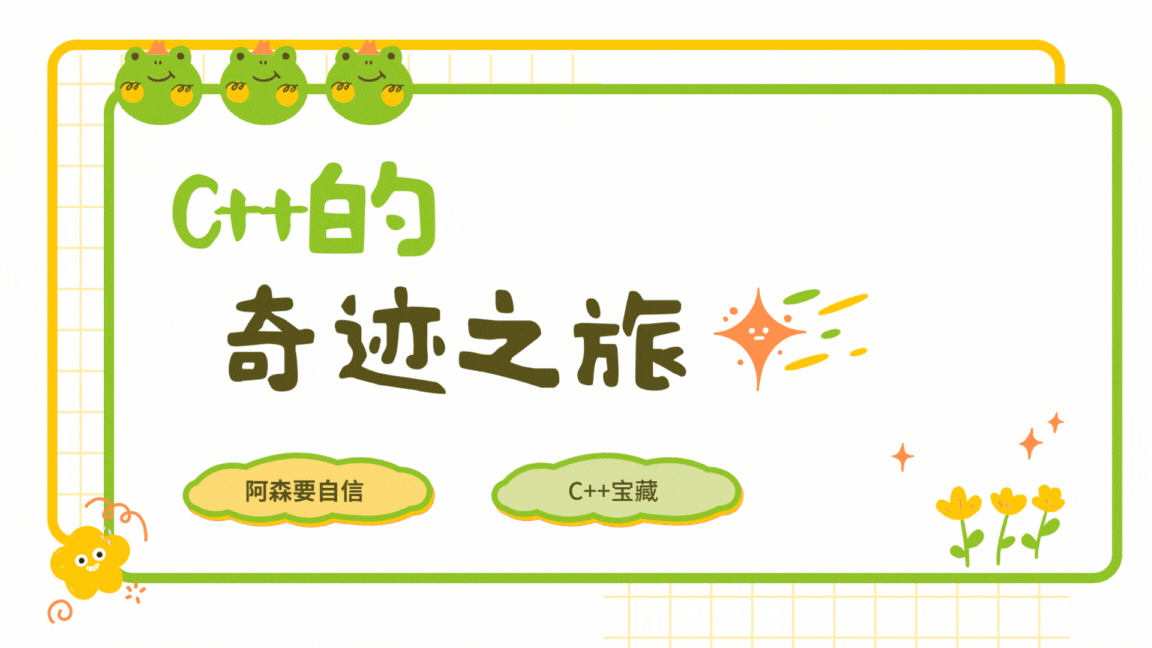
文章目录
- 📝string类的常用接口
- 🌠 string类对象的修改操作
- 🌉push_back
- 🌉append
- 🌉operator+=
- 🌉insert
- 🌉erase
- 🌉replace
- 🌉 find
- 🌉 c_str
- 🌠测试string
- 🚩总结
📝string类的常用接口
string网址查询:https://legacy.cplusplus.com/reference/string/string/
🌠 string类对象的修改操作
| 函数名称 | 功能说明 |
|---|---|
| push_back | 在字符串后尾插字符c |
| append | 在字符串后追加一个字符串 |
| operator+= (重点) | 在字符串后追加字符串str |
| c_str(重点) | 返回C格式字符串 |
| find + npos(重点) | 从字符串pos位置开始往后找字符c,返回该字符在字符串中的位置 |
| rfind | 从字符串pos位置开始往前找字符c,返回该字符在字符串中的位置 |
| substr | 在str中从pos位置开始,截取n个字符,然后将其返回 |
🌉push_back

将字符 c 追加到字符串的末尾,将其长度增加 1。
string s1("hello world");
cout << s1 << endl;
cout << s1.size() << endl;s1.push_back('x');
cout << s1 << endl;
cout << s1.size() << endl;

🌉append
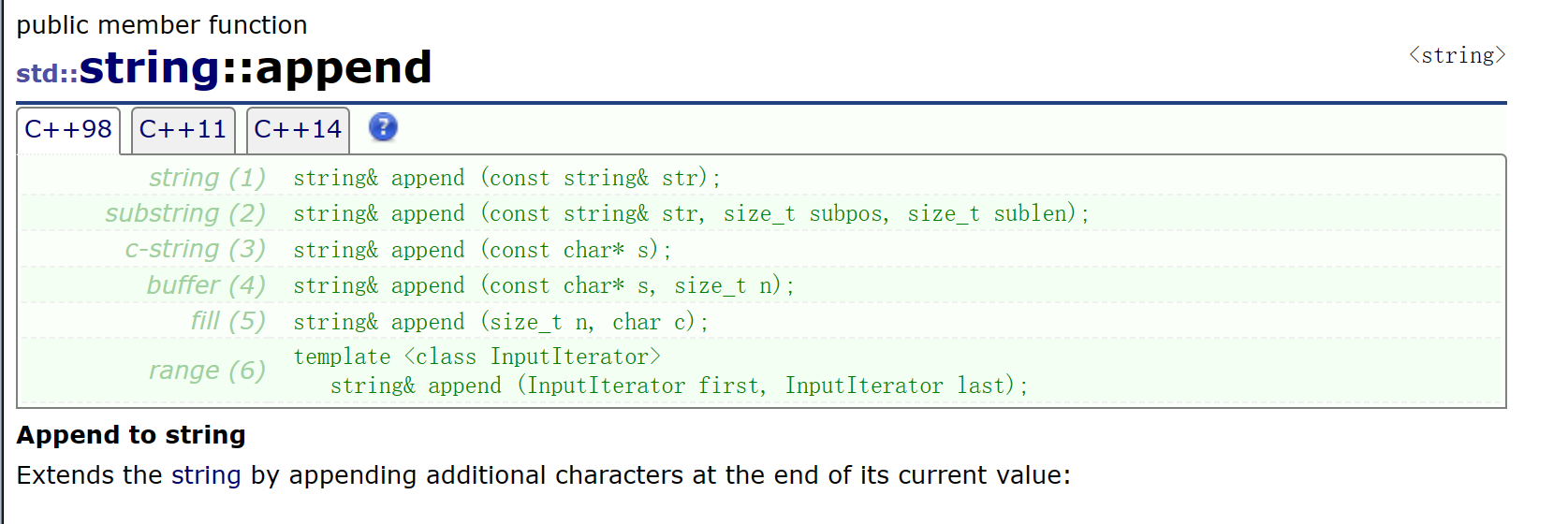
- 在字符串后追加字符串
string s2("hello world");
s2.append(" yyyyyy");
cout << s2 << endl;
cout << s2.size() << endl;
cout << endl;

string s1("hello String");
s1.push_back('!');
cout << s1 << endl;string s2("hello world");
s2.append(" yyyyyy");
cout << s2 << endl;
cout << s2.size() << endl;
cout << endl;s1.append(s2);
cout << s2 << endl;
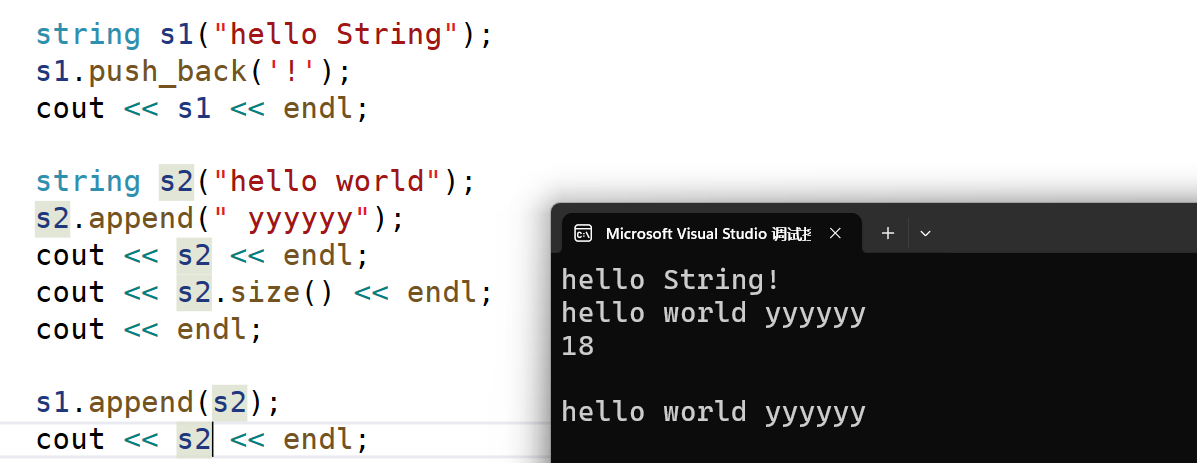
- 可以使用迭代器取某一部分字符串
string s1("hello String");
string s2("hello world");
s1.append(s2.begin() + 6, s2.end());
cout << s1 << endl;

综合其用法:
string str;
string str2 = "Writing ";
string str3 = "print 10 and then 5 more";// used in the same order as described above:
str.append(str2); // "Writing "
str.append(str3, 6, 3); // "10 "
str.append("dots are cool", 5); // "dots "
str.append("here: "); // "here: "
str.append(10u, '.'); // ".........."
str.append(str3.begin() + 8, str3.end()); // " and then 5 more"std::cout << str << '\n';
return 0;
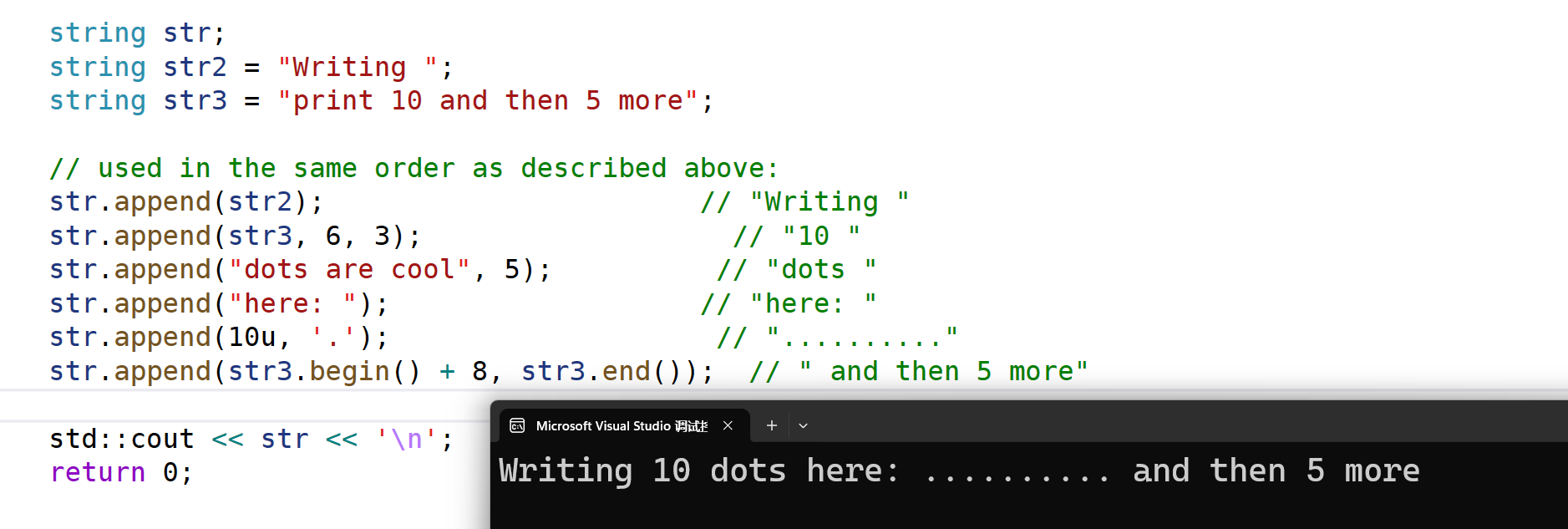
🌉operator+=

用法:通过在当前值的末尾附加其他字符来扩展字符串:可以追加这string对象,字符串,字符
例子:
string name("John");
string family("Smith");
name += "K ";
name += family;
name += '\n';cout << name << endl;

🌉insert
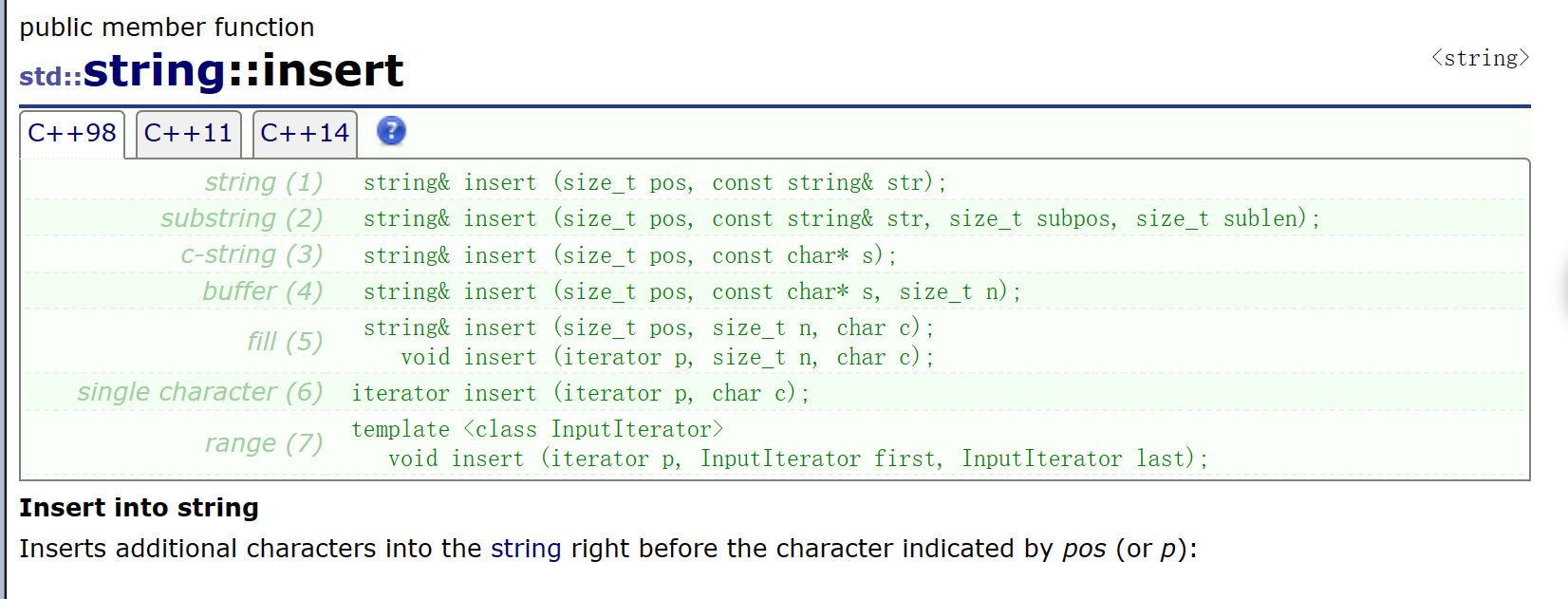
例如:在字符串中指定位置插入其他字符
string s1("to be question");
string s2("the ");
string s3("or not to be");s1.insert(6, s2);
cout << s1 << endl;s1.insert(6, s3, 3, 4);
cout << s1 << endl;s1.insert(10, "that is cool", 8);
cout << s1 << endl;

🌉erase

功能:擦除部分字符串,减少其长度:
三种擦除:顺序擦除,指定擦除,范围擦除
string s1("This is an example sentence.");
cout << s1 << endl;//顺序擦除
s1.erase(10, 8);
cout << s1 << endl;//指定擦除
s1.erase(s1.begin() + 9);
cout << s1 << endl;//范围擦除:擦除 [first,last] 范围内的字符序列。
s1.erase(s1.begin() + 5, s1.end() - 9);
cout << s1 << endl;

🌉replace
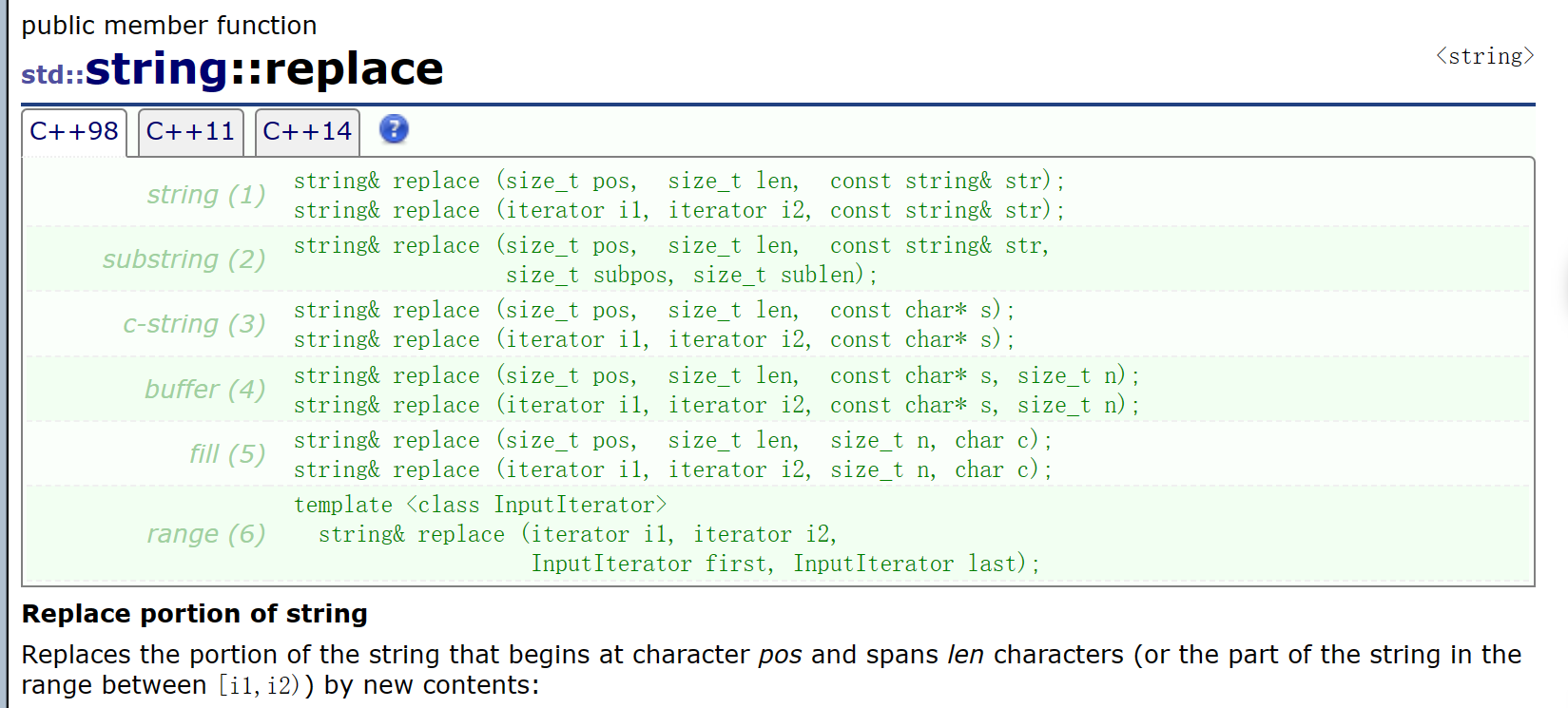
功能:用新内容替换字符串中从字符 pos 开始并跨越 len 字符的部分(或字符串在 [i1,i2) 之间的部分):
string base("this is a test string.");
string s2("n example");
string s3("sample phrase");string s1 = base;
s1.replace(9, 5, s2);
cout << s1 << endl;s1.replace(19, 6, s3, 7, 6);
cout << s1 << endl;
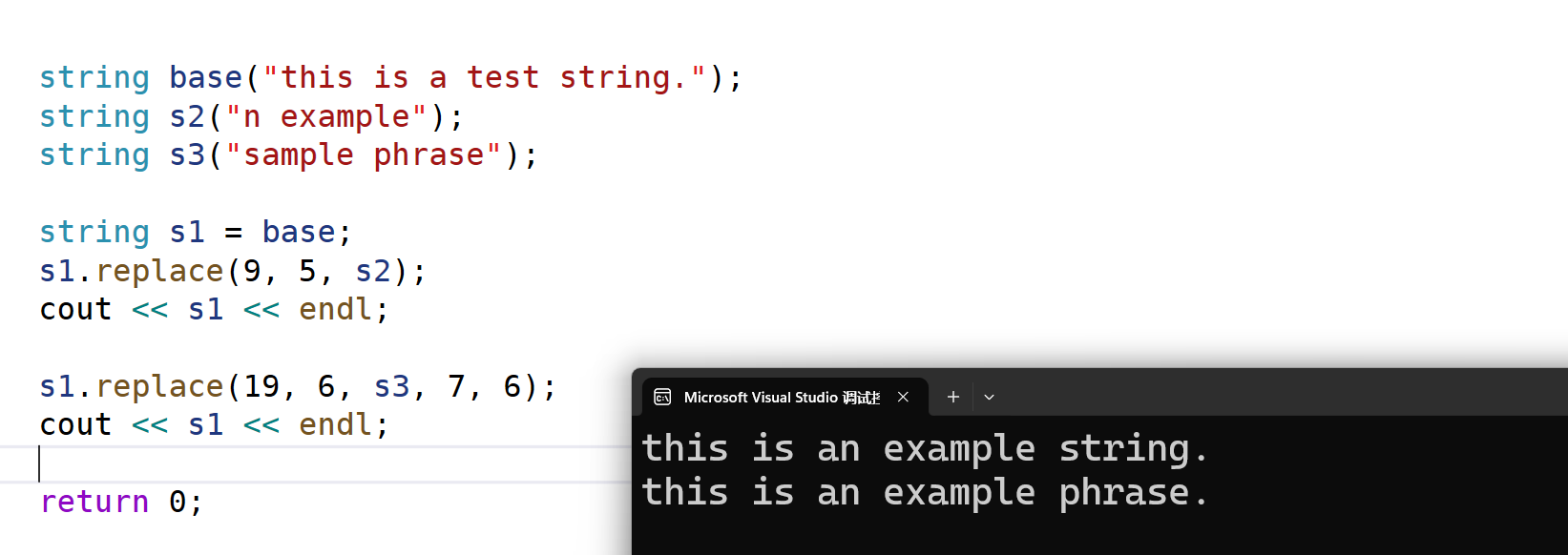
详细可查看:https://legacy.cplusplus.com/reference/string/string/replace/
🌉 find
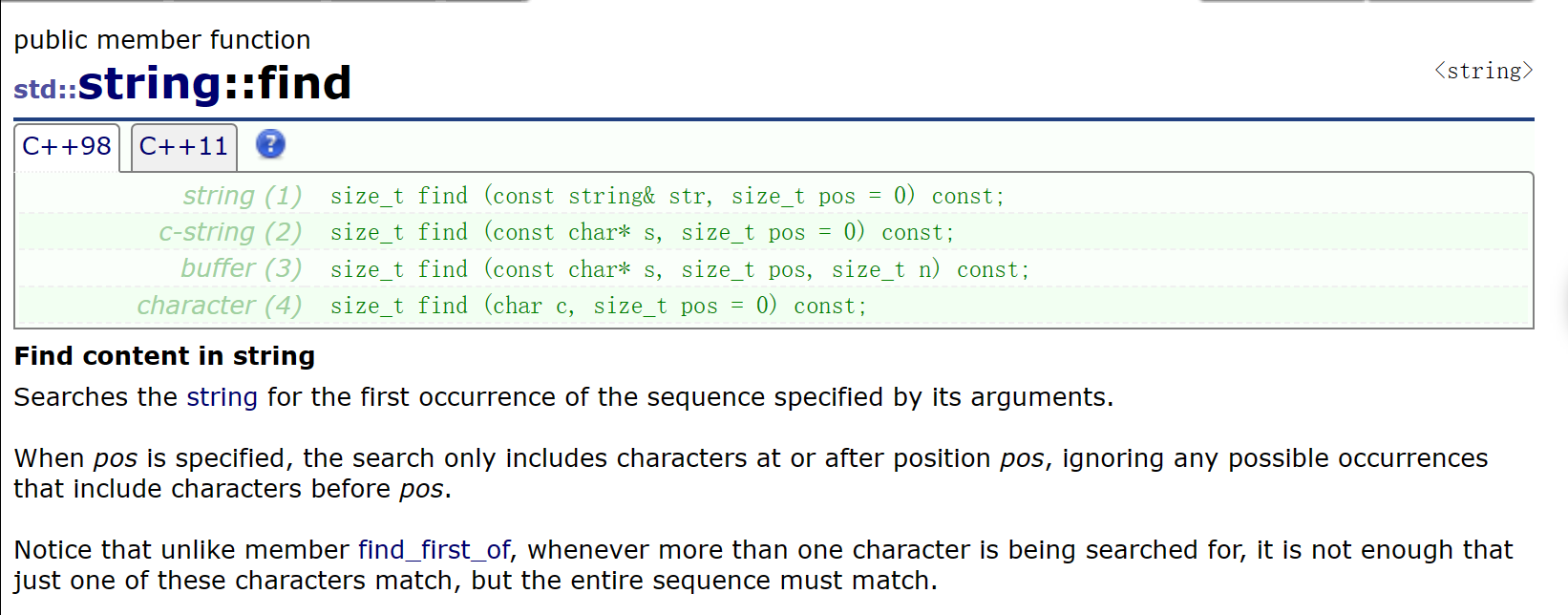
作用:用于在字符串中搜索指定子字符串或字符的第一次出现。
std::string::npos是std::string类的一个静态成员常量,表示当搜索的子字符串或字符未找到时,npos为无效值。
- 在字符串中搜索子字符串的位置:
#include <iostream>
#include <string>int main()
{std::string str = "The quick brown fox jumps over the lazy dog.";std::string substr = "brown";size_t pos = str.find(substr);if (pos != std::string::npos) {std::cout << "Found '" << substr << "' at position: " << pos << std::endl;} else {std::cout << "'" << substr << "' not found in the string." << std::endl;}return 0;
}
输出:
Found 'brown' at position: 10
- 从指定位置开始搜索子字符串:
#include <iostream>
#include <string>int main()
{std::string str = "The quick brown fox jumps over the lazy dog.";std::string substr = "the";size_t pos = str.find(substr, 15);if (pos != std::string::npos) {std::cout << "Found '" << substr << "' at position: " << pos << std::endl;} else {std::cout << "'" << substr << "' not found in the string." << std::endl;}return 0;
}
输出:
Found 'the' at position: 36
- 搜索字符:
#include <iostream>
#include <string>int main()
{std::string str = "Hello, World!";char c = 'o';size_t pos = str.find(c);if (pos != std::string::npos) {std::cout << "Found '" << c << "' at position: " << pos << std::endl;} else {std::cout << "'" << c << "' not found in the string." << std::endl;}return 0;
}
输出:
Found 'o' at position: 4
🌉 c_str
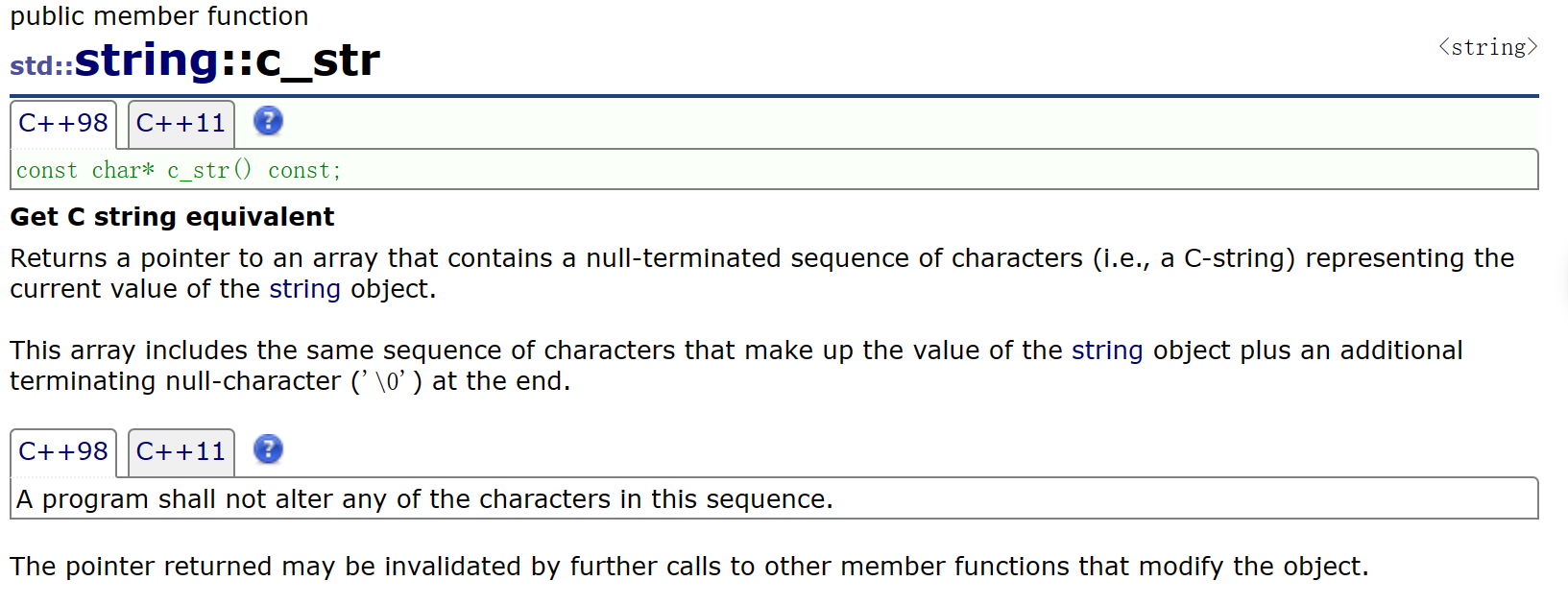
它返回一个指向字符串内容的 C 风格字符串指针(以 null 字符结尾)。这个函数非常有用,因为它允许你将 std::string 对象传递给需要 C 风格字符串的函数
string str = "Hello,World!";//使用 c_str() 获取 C 风格字符串
const char* cstr = str.c_str();
cout << cstr << endl;

🌠测试string
// 测试string:
// 1. 插入(拼接)方式:push_back append operator+=
// 2. 正向和反向查找:find() + rfind()
// 3. 截取子串:substr()
// 4. 删除:erase
void Teststring()
{string str;str.push_back(' '); // 在str后插入空格str.append("Hello");// 在str后追加一个字符"hello"str += 'S'; // 在str后追加一个字符'S' str += "tring"; //在str后追加一个字符串"tring"cout << str << endl;cout << str.c_str() << endl;//获取file的后缀string file("string.cpp");size_t pos = file.rfind('.');string suffix(file.substr(pos, file.size() - pos));cout << suffix << endl;//npos是string里面的一个静态变量//static const size_t npos = -1;//取出url中的域名string url("https://legacy.cplusplus.com/reference/string/string/find/");cout << url << endl;size_t start = url.find("://");if (start == string::npos){cout << "invalid url" << endl;return;}start += 3;size_t finsh = url.find('/', start);string address = url.substr(start, finsh - start);cout << address << endl;//删除url的协议前缀pos = url.find("://");url.erase(0, pos + 3);cout << url << endl;
}int main()
{Teststring();return 0;
}

🚩总结
注意:
- 在
string尾部追加字符时,s.push_back(c)/s.append(1, c)/s += 'c'三种的实现方式差不多,一般
情况下string类的+=操作用的比较多,+=操作不仅可以连接单个字符,还可以连接字符串。 - 对
string操作时,如果能够大概预估到放多少字符,可以先通过reserve把空间预留好。





)











)
![[oeasy]python0015_键盘改造_将esc和capslock对调_hjkl_移动_双手正位](http://pic.xiahunao.cn/[oeasy]python0015_键盘改造_将esc和capslock对调_hjkl_移动_双手正位)

